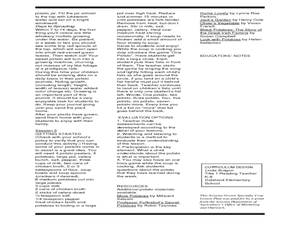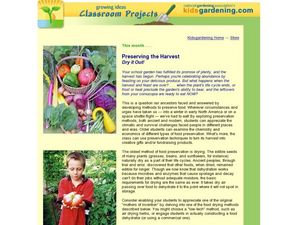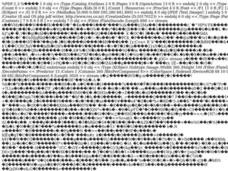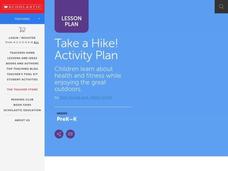Alabama Learning Exchange
Light, Dry and Nutritious - A Look at Dehydrated Food
Fifth graders study dehydration and dehydration of foods. They measure the amount of water lost from fruits as they are dehydrated. They use desktop publishing software to design an advertisement for dehydrated fruit after researching...
Curated OER
Astronaut's Favorite Foods
Students examine space food. In this space science lesson, students visit suggested websites to identify the eight categories of space food. Students use a space food nutrition guide to classify space food.
Curated OER
Solar Energy - Dehydration
Sixth graders explore process of drying food using solar energy. They cook and/or dry food such as pumpkins, watermelon, corn, and deer meat, explain how solar energy changes foods, and compare and contrast solar energy with other forms...
Curated OER
Arrays of Food
This lesson is based on video clip 220 from the Count on it! series, however the same problem can be posed with out the video. Learners work independently to determine the amount of dried food they will need for a camping trip. Each...
Curated OER
Farmers and the Food Connection
Students investigate the process of growing food. In this agricultural lesson, students invite a farmer into their classroom to discuss how they grow and process food. Students participate in learning centers which focus on farming.
Curated OER
From Mashed to Riches
Students discuss the uses of a potato. In this food group activity, students identify the five food groups and which one the potato belongs to. They create potato printing, compare different kinds of potatoes, grow a potato plant, and more.
Curated OER
Preserving the Harvest: Dry it Out!
Students explore how people preserved their food in the past. In food preservation lesson, students create different models that enable someone to dry out food, such as a food dehydrator. Students also learn how to...
Curated OER
Nutrition in Space
Students compare and contrast the process of dehydration with the processes of freezing and canning. They predict energy sources that may be accessible in the future in different environments such as the moon and planets, most notably Mars.
Curated OER
People and Space
Students explore space travel. In this space science lesson, students define "dehydration" and explain why dehydrated foods are necessary for space survival. Students prepare and eat a meal that includes a variety of...
Curated OER
People and Space
Learners eat dehydrated foods that the astronauts would eat in space. In this dehydrated foods lesson plan, students make lists of food they could eat, discuss how dehydration takes place, eat food, and complete discussion questions.
Science Friday
Sublime Sublimation
Dry ice isn't dehydrated water, and young scientists learn why in this fascinating presentation. After watching a video, they complete three different activities using dry ice. Upon completion, they discuss the scientific...
Curated OER
Structural and Behavioral Adaptations
Learners participate in a role playing lab that allows students to experience how different beak adaptations play a role in the type of food the animal can eat, therefore playing a role in the survival of the species.
Curated OER
Water/Hydration
Students develop an understanding of the role water has in the body and the importance of getting enough water each day. Through the instructional activity, students recognize the risks and signs of dehydration. Also, they identify...
Curated OER
Bacteria in Your Life
In this bacteria worksheet, students conduct an experiment by looking through their cupboard and refrigerator at home and locating the expiration date on six foods. Then they record what they found in the table shown. Students also...
Curated OER
Worksheet 8. Vocabulary Review
For this vocabulary review worksheet, students complete the 9 sentences on the page using the 9 words in the word bank. The words all have to do with food.
Curated OER
Take a Hike!
Students explore the benefits of staying active by going on a hike. In this physical education lesson, students discuss the concept of a hike, where a good place to hike is and what types of foods are necessary to stay nourished....
Curated OER
What's the Matter with My Orange?
Learners use oranges to informally explore decomposition, dehydration, fermentation, the water cycle, bacteria, yeast, food webs, the needs of living things, and physical vs. chemical change over a period of three or more months.
Curated OER
Grinding corn in Swaziland
Students participate in grinding corn, a major part of food preparation in rural Swaziland.
Baylor College
Water in Your Body
Do you know how much water you have had in the last 24 hours? Do you know how much your body needs? In this hands-on activity, your class members will estimate how much water our bodies lose each day by filling and emptying one-liter...
Curated OER
Reading Comprehension 1: Level 12
Need to assess the reading comprehension level of your class or of a new student? The subject matter of the reading passage, euthanasia, is sure to engage your readers’ interest while the questions test a variety of comprehension...
Desert Discoveries
Desert Tortoise: Fact or Fiction?
Here is a good game that will determine which team knows the most about the Sonoran Desert tortoise. There are 16 questions posed, and the answers are printed in bold for the benefit of the teacher. Question # 16 reads, "Desert tortoise...
Curated OER
Lipids: Fats and Oils
A fantastic presentation with great images should improve student understanding of lipids and their involvement in the body. The chemistry of different fats, phospholipids, and steroids are explained. Additionally, the specific...
Curated OER
Lipids: Fats and Oils
A fantastic presentation with great images should improve student understanding of lipids and their involvement in the body. The chemistry of different fats, phospholipids, and steroids are explained. Additionally, the specific...
Curated OER
Microbes and Health
Students participate in activities that show them how tiny germs are spread. In this germs lesson plan, students engage in hands on lessons to show them how microorganisms can easily spread disease through the mouth and hands.

























